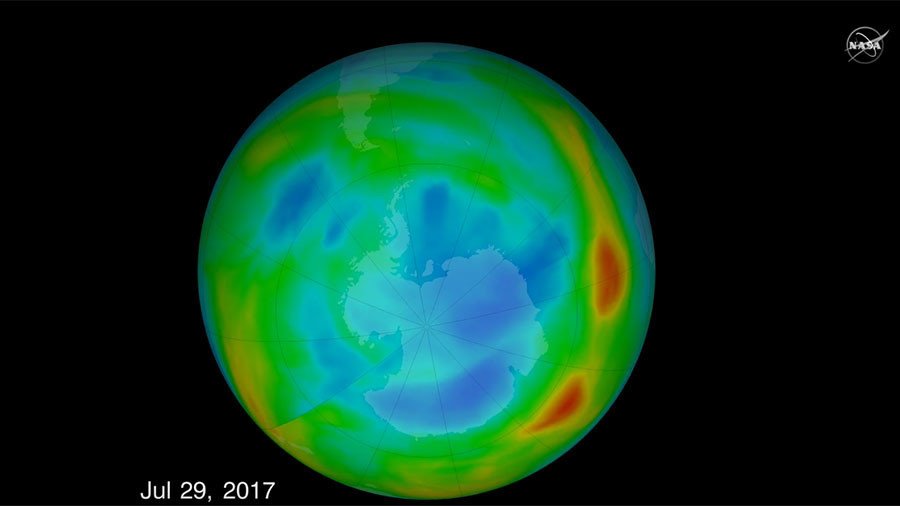It’s official! CFC ban is shrinking hole in ozone layer, says NASA

The hole in the ozone layer has shrunk thanks to low levels of chlorine in the stratosphere – a drop brought about by the ban on CFCs, according to the latest NASA research.
Scientists from the agency’s Jet Propulsion Laboratory (JPL) in California used the Microwave Limb Sounder (MLS) aboard the Aura satellite to measure the amount of chlorine in the stratosphere. The resultant study, published in the journal Geophysical Research Letters, found that there has been around 20 percent less ozone depletion during the Antarctic winter than there had been when the Aura was launched in 2005.
READ MORE: Libertarian think tank to Trump: 'No benefit' in climate agreement
NASA credits the decline to the worldwide ban on chlorofluorocarbons (CFCs) enacted in 1987. "We see very clearly that chlorine from CFCs is going down in the ozone hole, and that less ozone depletion is occurring because of it," Susan Strahan, an atmospheric scientist from NASA's Goddard Space Flight Center in Maryland, said in a statement.
The ozone layer acts as a protective shield around the Earth, absorbing the Sun’s harmful ultraviolet radiation which can cause cancers, suppress the immune system in humans and damage plant life. CFCs are man-made chemical compounds that, when exposed to ultraviolet radiation in the stratosphere, break up and release chlorine atoms that destroy ozone molecules.
'Soon it'll be too late': 15,000 researchers issue #doomsday warning https://t.co/vai7Gj0bna
— RT (@RT_com) November 14, 2017
The MLS measures microwave emissions and trace gases over the Antarctic. The southern winter period, which goes from early July to September, is seen as ideal for monitoring stratospheric conditions as the temperatures are low and stable. Daily readings taken every year from 2005 to 2016 revealed that ozone loss is decreasing.
READ MORE: Hole in ozone layer shrank to smallest size since 1988 – NASA (VIDEO)
Despite the encouraging results, Anne Douglass, a fellow atmospheric scientist at Goddard, believes a complete ozone recovery is still a long way off. "CFCs have lifetimes from 50 to 100 years, so they linger in the atmosphere for a very long time,” Douglass said. “As far as the ozone hole being gone, we're looking at 2060 or 2080. And even then there might still be a small hole."












